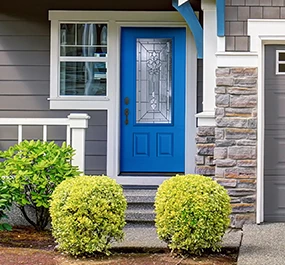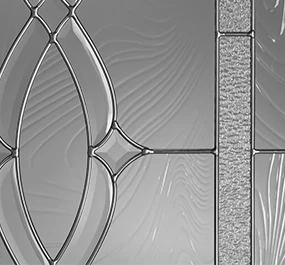Keeping your home on-trend isn’t always an easy task. Different looks are constantly coming into style, and each new movement comes with a slew of new ideas that can help transform your home inside and out. That’s why sustainable home design is such an interesting trend—it goes against the short-lived nature of a trend by promoting changes that have long-lasting impacts on a property and its surrounding ecosystem.
For the homeowner serious about sustainable living, these trends will either become semi-permanent fixtures of the household or frequent family habits that can help you put sustainable home design ideas into practice.
What is Eco-friendly and Sustainable Home Design?
Have you decided to be more cognizant about how your everyday life and habits impact the world around you? Do you want to make improvements to your home so its energy footprint shrinks? Do you just want to stay on trend and utilize the sustainable design movement to keep your home looking stylish until the next aesthetic begins taking hold? Whatever your reason, you’ll need to understand the concept if you want to put it into practice.
A sustainable home utilizes materials that have little-to-no impact on the world outside the home either while they’re being made or while they’re serving their purpose. Sustainable design expands that mindset to the materials that make up the home’s interior. Attention to detail in this regard will allow homeowners to remain on trend and continue to lessen their impact on their environment.
What Makes a Home Environmentally Sustainable?
Whether you’re retrofitting your existing property for sustainability’s sake or you’re crafting an entirely new space with an eye towards sustainability from the start, there are a number of ways to lessen the impact you and your family will have on the environment. Four features most homeowners focus on are utilizing green building materials from eco-conscious manufacturers, practicing eco-friendly window design, utilizing technology to lessen their impact, and deploying sustainable elements inside the home.
If you’re striving to build a sustainable house, you’re going to want to pay attention to the percentage of recycled content in your building materials. Focus on this for jobs that call for a large amount of the same thing, like glass for countertops, wood for construction lumber and carpet for flooring—though any mindful change can have a positive impact, no matter how small.
Reclaimed or reconstituted wood can also be used for flooring, but if you do go with new materials for your floors, consider bamboo. The grass that bamboo flooring is made from grows quickly, so the amount that was taken to make that floor is easily replenished. With the cost of lumber rising in recent years, bamboo has become an affordable alternative that’s better for the environment.
Some people are set on incorporating the newest of the new in every aspect of their home. It may be because terms like “post-consumer” and “reclaimed” influence their thought process and cause them to think these materials are somehow weak or dirty compared to materials purchased new. However, modern technology allows professionals to revisit these materials and make them like new. They should be considered right alongside any other material for both their cost effectiveness and their lessened impact once put to use in place of something brand new.
Sustainability Ideas for Your Home’s Exterior
Other investments that pay for themselves most likely involve weatherproofing, like minimizing heat loss and cold penetration caused by a home’s windows. Exterior doors are also a great place to make improvements that directly impact sustainability. Doors let the elements in when they’re open, but they’re also inherently less compatible with sustainability than a stationary wall because they can’t be equipped with the same sort of protections against the elements. That’s why it’s important to look for an exterior door that contributes to a sustainable lifestyle instead of complicating it.
At Plastpro, we are committed to promoting sustainability by producing environmentally-friendly products. We define this as balancing our environmental, economic, and social goals to create products that meet the needs of today without compromising the future. Our fiberglass doors are an excellent green alternative, as they are not only durable and long-lasting, but also energy-efficient and eco-friendly.
Our proprietary foam core is not only highly insulating, serving as great weatherproofing, but also compliant with the Environmental Protection Agency’s SNAP 20 regulations for cleaner air. It contains no Volatile Organic Compounds and uses more sustainable alternatives for foam blowing agents whenever possible, including both zero-ozone-depleting and low GWP blowing agents.
In addition, Plastpro doors are built to last. Their durable lifespan requires less maintenance, which can account for a significant portion of your home’s budget over time. Overall, our fiberglass doors are a natural choice for environmentally-conscious consumers seeking green, sustainable building materials.
Sustainability Ideas for Your Home’s Interior
Choosing eco-friendly building materials is a great way to make a large, immediate impact, but this philosophy can be applied inside the home and produce similar results—even if it takes a little longer to notice it.
Replacing appliances with energy efficient counterparts is another investment that gradually pays for itself by dropping the overall power consumption of your home. If you’re appliance shopping and sustainability is high on your list of deal breakers, just look for the Energy Star certification on any product’s packaging. This is an easy way to tell if you’re considering an efficient purchase.
Utilizing repurposed materials inside is just as important as including them in your building plan, but also be sure to utilize items that are non-toxic and organic. Organic isn’t just a buzzword popularized so companies can charge a little more—it’s a product feature that can improve the air quality in your home and limit your family’s exposure to dangerous chemicals.
Sustainable Home Design Trends for 2023
Trends are often talked about in terms of aesthetic design, but don’t underestimate technology’s ability to popularize movements in our modern world. Electrical use is an obvious area where improvement can occur, but technology’s sphere of influence also includes water preservation, which is made even easier by the Environmental Protection Agency’s WaterSense branding. Look for it on toilets, faucets and other fixtures that utilize water in and around the home, and consider replacing anything that’s out of date.
Ideas can be another lens for trends, and they can impact more than just the home. In our minds, living a sustainable, responsible lifestyle is directly correlated to living a healthy, mindful one.
For example, cutting down on the wasteful use of resources can be coupled with cutting down on purchases involving wasteful packaging, creating two direct points of environmental and personal impact. Other principles include using your land effectively and with little-to-no impact on local wildlife, being mindful of community cultural values, and supporting local food vendors.
You could consider becoming your own food vendor, too! Gardens are a great hobby and can provide you with fresh ingredients. Just look into local laws before adding animals, like chickens, to your sustainability plan.
Making Your Home Environmentally Friendly Without Renovations
The most environmentally-friendly home style is called a passive home. They’re designed and built to use little-to-no electricity, with technology and design sense that achieves that goal with minimal impact on both the environment and the homeowner’s everyday routine. It isn’t easy to achieve such a feat, as passive homes have features that must be built in from the start—or require in-depth installation projects—like heat recovery ventilators, advanced insulation, and well-executed ventilation and air circulation systems.
You may not be able to fashion a passive home from your existing dwelling—or your existing budget—but you can take steps to improve you and your property’s existing relationship with sustainability.
Installing smart technology is a great way to lessen your home’s environmental impact—and lower your utility bills. It’s no coincidence that technology used to give homeowners more control over their homes grew in popularity as the sustainability movement began to take hold, and now, homeowners can install smart bulbs, switches, thermostats, and more, with the aim of living more comfortably while also having a better grasp on the energy usage of the home. Outside of technology, homeowners can weatherproof doors and windows or utilize natural advantages like sunlight to lessen the need for artificial temperature control.
Another way to save on energy and lower your everyday consumption of resources is by installing solar panels on your property. Every year, personal solar power grows in popularity—which has caused prices to continually drop while panel technology continually improves. This investment can pay for itself, and with increased battery life and panel output, it does so faster than ever before.
Sustainable Home Design for DIYers
If you’re an accomplished DIY completionist or you’re just looking for a weekend project, there are a number of ways you can utilize that drive to make your home more eco-friendly.
Repaint parts of your home with paints that emit fewer toxins, creating a healthier environment for your family. Redecorate your space with live plants—this will also impact air quality, but this replaces the need to purchase a new batch of throwaway decorations made from questionable materials. After they expire, the plants can either be repurposed as dried decorations or used as compost!
Use locally sourced materials to build new furniture, shelving or decorations.
Take the design mindset outside and replant your yard with native plant life. Replace any lights with low energy options and be sure to utilize environmentally-friendly paint if you’re taking on any outdoor projects. If you live in an arid area, reconsider the role greenery has in your lawn care.
Accomplish Your Renovation Goals with Plastpro
Utilizing local, natural or reclaimed materials is ideal in certain areas of your home, but the front door’s ability to let the environment—and other people—into your living space means that the best option may not be something like wood or repurposed steel. Fiberglass doors keep heat in better than either of the aforementioned options, they require less maintenance and they withstand more punishment before they’re compromised. They may not be made from local materials, but they have a positive impact on sustainability.
Plastpro’s fiberglass doors go one step further by including a foam core, which steps the door’s sustainability up to the next level. Not only does the foam core make for a sturdier door, it also helps keep utility costs low and helps decrease energy consumption. To explore your fiberglass door options, contact a Plastpro dealer in your area.



